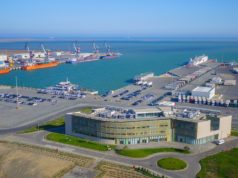Automation of shipping and ports has been dubbed as a “marketing rush” by the president of the Maritime Union of Australia (MUA) Paddy Crumlin, while speaking in Singapore last week.
According to the MUA President, and its General Secretary Stephen Cotton, consequences of automation have not been carefully thought through.
The union leaders see the push for automation of the two sectors more as a form of union busting, stressing that the benefits such as higher productivity and cost effectiveness have not been proven.
Even though automated ships are a long way off, MUA believes that a more balanced discussion should take place in order for various aspects of the process to be hammered out, as numerous uncertainties remain in the air.
The criticism comes on the back of Wärtsilä’s testing of the remote control of ship operations.
The testing, which involved driving the vessel through a sequence of maneuvers using a combination of Dynamic Positioning (DP) and manual joystick control, was carried out on August 21 off the North Sea coast of Scotland in collaboration with US-based operator Gulfmark Offshore.
The remote control navigating was carried out from the Wärtsilä office located in San Diego, California, 8,000 km away.
Wärtsilä’s move is just the tip of the iceberg as numerous shipping majors rush to join the automation race and the hope of reaping the advantages and efficiencies it promises.
These include Rolls-Royce, NYK Line, ABS, Yara and Kongsberg,to name just a few, who have embarked upon projects aimed at bringing to the seas the first autonomous and zero emissions ship.
As disclosed earlier to World Maritime News by DNV Gl’s expert Albrecht Grell, ships are becoming sophisticated sensor hubs and data generators, and advances in satellite communications are improving ship connectivity, allowing for a massive increase in the volumes of data transferred at ever-lower cost.
The benefits to be reaped from the switch include combining data streams from multiple sources that will enable the industry to make informed decisions faster, leading to more efficient operations and responsive organizations.
What is more, when it comes to seafarers, it is believed that remote and autonomous operations could see the transfer of seafaring jobs, requiring high levels of education and skills, from sea to remote operations centers on land and make them more attractive to young people entering the industry.
Nevertheless, at this point in time, it is still too early to judge how the process would impact the workforce.
© Content from this site must be hyperlinked when used






